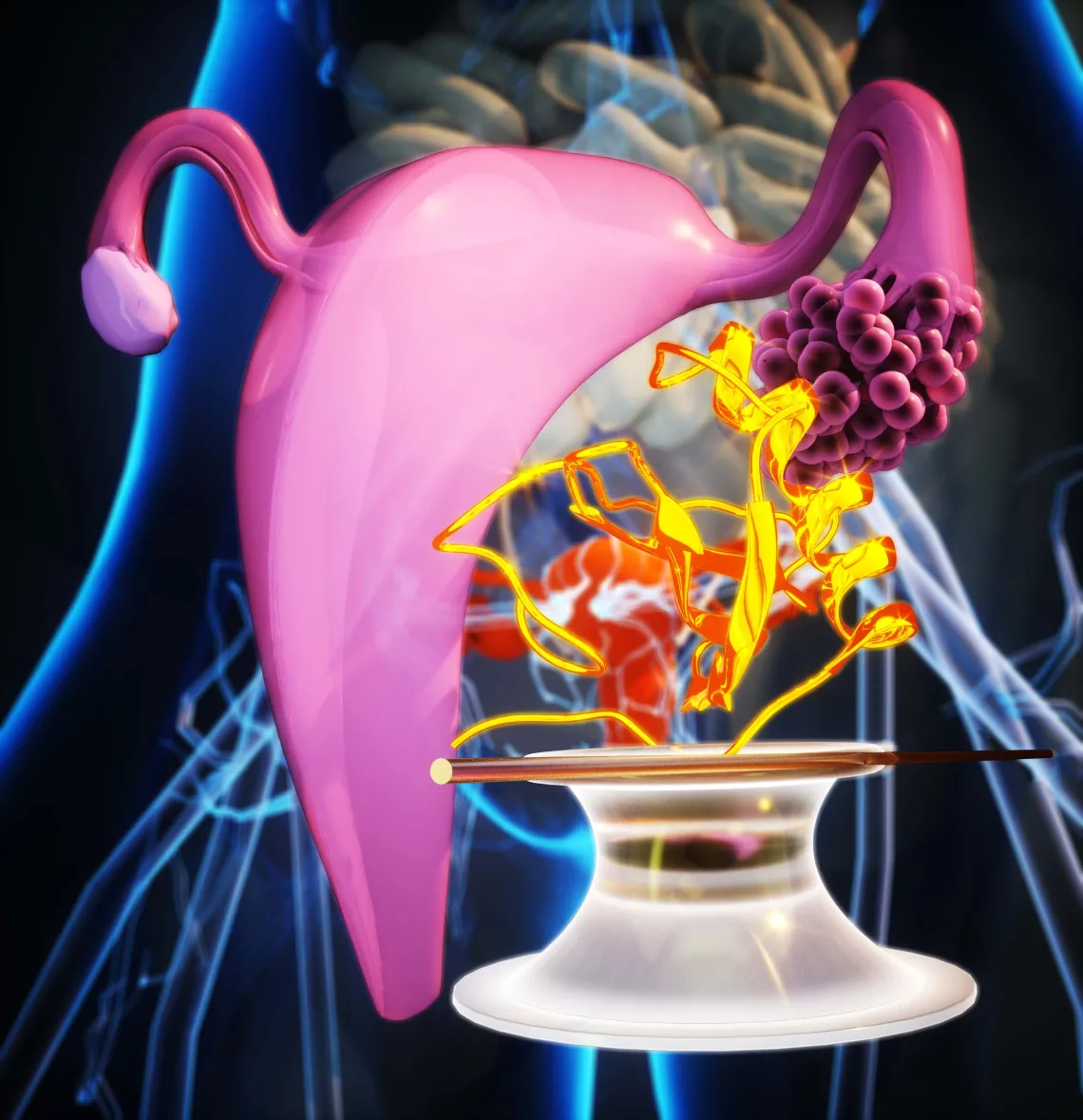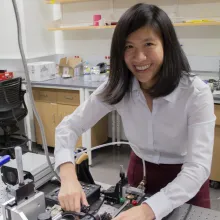FLOWER is After Ovarian Cancer Detection: A Five Minute Review with Prof. Judy Su

Artist Representation of FLOWER and its application for detecting ovarian cancer. Mass spectrometry proteomics uncovers potential biomarkers in high grade serous ovarian cancer with the aim of identifying and detecting disease prior to physical presentation of symptoms. Microtoroids, highlighted in this image, allow for extremely sensitive detection of specific biomolecules at their surface and were used to sense cystatin A from vaginal lavages and tampons.
Ovarian cancer can be extremely dangerous and difficult to detect in its early stages—putting the patient at significant risk of developing life-threatening cancer. According to the American Cancer Society in the USA in 2023, approximately 19,710 women will be diagnosed with ovarian cancer and 13,270 women will die from ovarian cancer (more). However, Prof. Judy Su’s work into FLOWER (frequency locked optical whispering evanescent resonator) is unlocking new possibilities for early detection of ovarian cancer before symptoms have even presented—meaning that many women can begin to receive treatment before the cancer has become severe. In Su’s recent paper, “An Integrated Approach to Protein Discovery and Detection From Complex Biofluids” Prof. Su discusses how the technology can sample items from the vaginal environment (a tampon, even) to detect proximal sources for tumor detection. This enables a proactive method for identifying ovarian cancer in patients with little to no risk—something that has the potential to become part of standard health tests that is less invasive than a pap smear.
How did the idea for FLOWER first occur to you as a possibility?
The idea for FLOWER came to me when I was a graduate student at Caltech through a conversation I had with Carver Mead, who coined the term Moore’s Law. I was working on the problem of label-free single molecule detection but was unable to repeat the work of the previous student. I was discussing with him the issues I was facing in my experiments, and he suggested using frequency locking which became a main aspect of FLOWER. I’ve visited Caltech several times post-graduation and have always learned from my conversations with people there. Funnily enough, one of my now colleagues, Khanh Kieu was also present at that conversation with Carver.
FLOWER has been applied to a wide variety of applications from COVID-19 identification to Alzheimer’s Disease. How can FLOWER possibly identify so many different kinds and types of biomarkers in healthcare?
FLOWER is similar to, for example, a microscope in the sense that it is a platform technology, meaning it can be adapted for a variety of applications. As long as we have appropriate capture agents for a particular biomarker, FLOWER can selectively detect a wide range of markers. This versatility allows FLOWER to be applied to diverse applications in healthcare, from identifying COVID-19 to detecting biomarkers associated with Alzheimer’s Disease.
Now that you’ve shown FLOWER can identify biomarkers for ovarian cancer, what happens next?
For this project we’ve identified a potential biomarker. The next step would be establishing how good of a biomarker this is using a larger group of patients. FLOWER has a lot of exciting applications, ranging from basic science to environmental monitoring and medical diagnostics. Hopefully one day in the not-so-distant future we’ll have enough manpower and resources to explore them all!
More in the News
- Prof. Judy Su's Research Website
- Judy Su Recipient of NSF CAREER Award | UArizona Wyant College of Optical Sciences
- $1.8M to Advance Device for Detecting COVID-19, Cancer, Contaminants | UArizona College of Engineering
- FLOWER power optical sensor: another tool in Covid-19 battle | Optics.org
- Senior Member Insights: Judith Su | Optica-opn.org

More about Judy Su
Judith Su's background is in imaging, microfabrication and optical instrument building for biological and medical applications. In general, her research interests are to use imaging, sensing and rheological techniques to reveal basic biological functions at the molecular, cellular and tissue levels. Recently her work has centered on label‐free single molecule detection using microtoroid optical resonators with an eye on basic research, and translational medicine through the development of miniature field portable devices.
